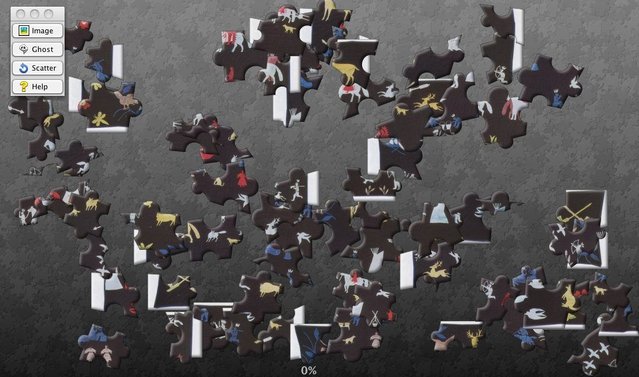For those of you who need a little inspiration when deciding whether to do the 2011 BOM Ruffled Roses, take a look at what our members accomplished with the 2008 BOM. The results are beautiful and prove that you can do it, a month at a time.
 |
For those of you who need a little inspiration when deciding whether to do the 2011 BOM Ruffled Roses, take a look at what our members accomplished with the 2008 BOM. The results are beautiful and prove that you can do it, a month at a time.
 |
 What do you do with your broken, worn out, or just plain cranky quilting tools? Do you repair them, recycle them, re-designate them for paper use? Submit a comment and give us hints on what to do with that broken, used, or cranky tool.
What do you do with your broken, worn out, or just plain cranky quilting tools? Do you repair them, recycle them, re-designate them for paper use? Submit a comment and give us hints on what to do with that broken, used, or cranky tool.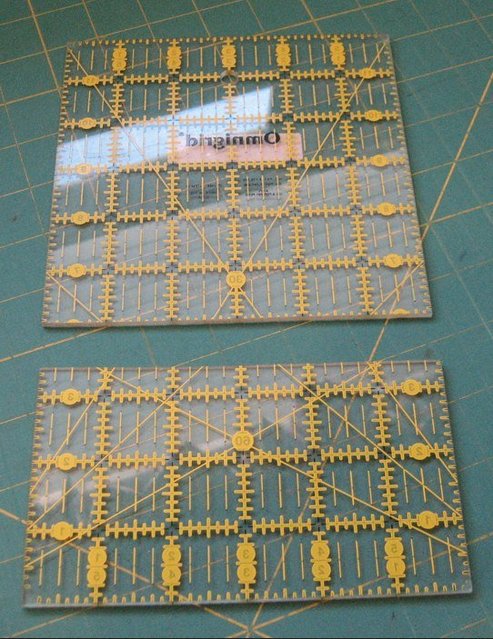
Our hearts go out to all of the families touched by the devastating and unusual weather that has recently hit various regions of the world. From the floods in Australia to the snowstorms along the Eastern US, we at TQS want all our friends around the world to know that our thoughts and prayers are with you.
If you know of an organization that is working to aid those who have been hit, please let us know here. We will be glad to post updates for TQS members who would like to contribute.
Flooding in Brisbane, Australia - BBC News

Snow Storm in Arkansas, USA. - weather.com

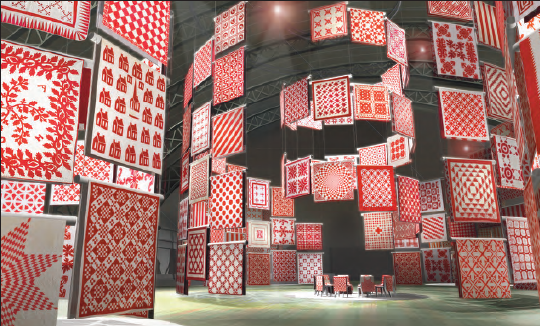
For six days, beginning March 25, 2011, the American Folk Art Museum in NYC will dramatically transform the Park Avenue Armory’s historic, 55,000-square-foot Wade Thompson Drill Hall with the installation of more than 650 red and white American quilts, all of which are on loan from one private New York City collection. This will be the largest exhibition of quilts ever held in the city. As an extra-ordinary gift to the public, entry to this unprecedented event is FREE.
With quilts displayed in seven pavillions, this red-and-white spectacle is sure to inspire admiration and awe. Along with the beautiful quilts, the event will include a special program on Saturday, March 26, moderated by Meg Cox and entitled "A Conversation with Paula Nadelstern and Alex Anderson." Paula (Episode 508) and Alex (Episode 408) will discuss where quilting has been and where it is going. A reception and book signing will follow the discussion.
If you are anywhere near the New York metro area, you won't want to miss this once-in-a-lifetime event! TQS will bring you more information on this outstanding exhibit soon.
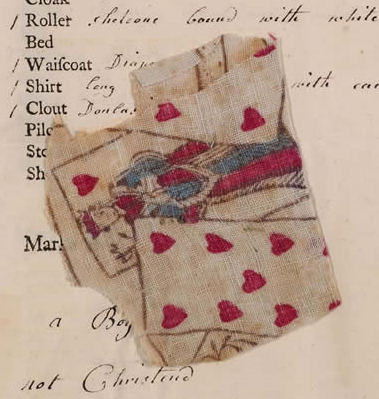
Courtesy of The Foundling Museum
Threads of Feeling, a poignant exhibit currently at the Foundling Museum in London, showcases fabrics never shown before to illustrate the moment of parting as mothers left their babies at the original Foundling Hospital. (The hospital continues today as the children’s charity, Coram.) The museum exhibit runs through March 6, 2011.
In the cases of more than 4,000 babies left between 1741 and 1760, a small object or token, usually a piece of fabric, was kept as an identifying record. The fabric was provided either by the mother or cut from the child’s clothing by the hospital's nurses. Attached to registration forms and bound up into ledgers, these pieces of fabric form the largest collection of everyday textiles surviving in Britain from the 18th century.
A selection of the textiles and the stories they tell us about individual babies, their mothers, and their lives forms the focus of the "Threads of Feeling" exhibition. The exhibition also examines artist William Hogarth’s depictions of the clothes, ribbons, embroidery, and fabrics worn in the 18th century as represented by the textile tokens.
John Styles, Research Professor in History at the University of Hertfordshire, received funding from the Arts and Humanities Research Council to curate the exhibition. Styles comments: “The process of giving over a baby to the hospital was anonymous. It was a form of adoption, whereby the hospital became the infant’s parent and its previous identity was effaced. The mother’s name was not recorded, but many left personal notes or letters exhorting the hospital to care for their child. Occasionally children were reclaimed. The pieces of fabric in the ledgers were kept, with the expectation that they could be used to identify the child if it was returned to its mother.
"The textiles are both beautiful and poignant, embedded in a rich social history. Each swatch reflects the life of a single infant child. But the textiles also tell us about the clothes their mothers wore, because baby clothes were usually made up from worn-out adult clothing. The fabrics reveal how working women struggled to be fashionable in the 18th century.” For more information on this exhibit, click here.
Sausalito, a new line of fabrics from P&B Textiles, adds a touch of subtle but sophisticated color to this quick-and-easy table runner, adapted from a quilt seen in the book Colliery Days. You can stitch this scaled-down and updated version of the classic stone-floor-quilt pattern in a single afternoon. The finished table runner measures 24" x 12". Center blocks are cut at 3 1/2" x 4 1/4", and the end blocks at 3 1/2" x 2 1/2". See the original stone-floor-inspired quilt, and to learn about a Colliery Village. See the entire P& B Sausalito line of fabrics here.

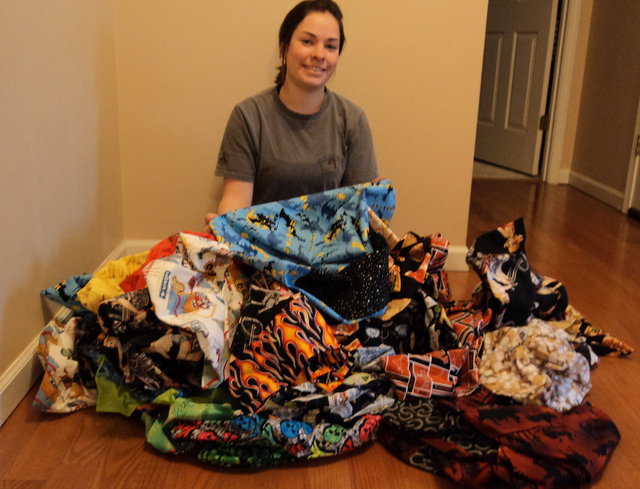
I've moved around the country quite a lot, but the main passions that have remained constant in my life have been sewing and community service. Over a year ago, I began volunteering for Soldier’s Angels, an organization that sponsors a variety of projects to support American soldiers, and through which I write letters to deployed troops.
A quilter since second grade, I previously had put my sewing efforts toward making quilts for friends, family, and myself. As I approached my senior year in high school, and the college applications that go along with it, I realized that combining my passions would be both fulfilling and a strong sign of success. With that in mind, I began to sew quilts for Soldier’s Angels to give to wounded soldiers. Then my parents suggested the idea of making pillowcases for soldiers, as pillowcases could be completed in larger quantities than blankets and thus could touch more lives. Soldier’s Angels eagerly supported the idea, suggesting that the pillowcases be sent to combat hospitals in Afghanistan, which tend to be simple, drab structures. A happy mind can do wonders for physical healing, and a fun pillowcase could be a great brightener in a soldier’s day.
This project officially began with the new year, so it is still in its infancy. I’m very excited to get the ball rolling and make this a highly successful endeavor, but I need the help of others! I am asking all of my fellow TQS members to sew for the cause! Compared to making quilts, a pillowcase is a quick project. It is simple enough for even the newest sewers. Above all, it is personally rewarding to do good for others, and it feels as wonderful to give as it does to receive.
If you are interested in helping out, please read the guidelines that Soldier’s Angels has determined for the pillowcases here. Note that the pillowcase dimensions given are approximate, and any pattern for a standard-sized pillowcase will do. This is a great chance to use those fun, bold fabrics that never seemed to work in a quilt: the pillowcases I've made include prints featuring pizza, candy of all sorts, superheroes, and much more. If you need a pattern, feel free to contact me here. Learn more about Soldier’s Angels here.
I’m so excited to see this project grow and touch the lives of many wonderful soldiers who have sacrificed so much to help others. I'm working very hard to reach as many soldiers as possible. I even sewed over fifty pillowcases this winter break! But I can't do this alone, and I need the help of the TQS community to reach more soldiers. Please help sew, and please help spread the word about Patriot Pillowcases! Whether it's a one-time project or something you do more frequently, I would love your help, and I know the soldiers would love your contribution, too!

This is Great! Submit a comment and let us know how many you guess correctly.
 |
This quilt was traded to Alex Manor for some chickens. It was made on the Crow Creek Reservation of South Dakota. It was stolen and turned up in a pawn shop. Alex' sister, Hattie Anderson, kept the quilt and it was passed down through her family. In 1975 the quilt was taken back to the reservation in an attempt to decode the pictures. It is said that the story begins in the upper right corner and ends in the lower left corner and tells tales of hunting and Indian family life.
The Pictograph quilt was made c. 1900 and is 70" x78" It is made from cottons and is hand appliqued and quilted.
Pictograph1 - 80 pieces non-rotating
Pictograph2 - 72 pieces rotating
